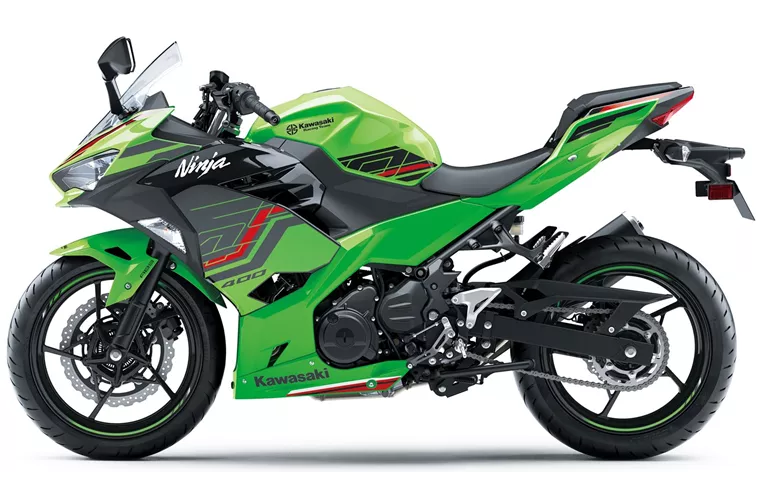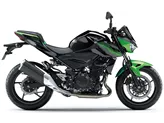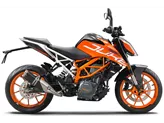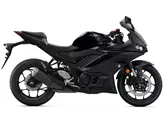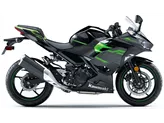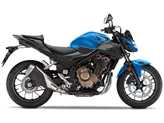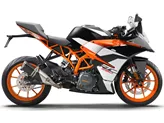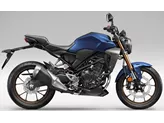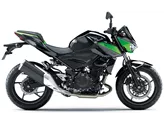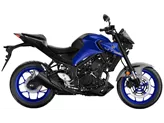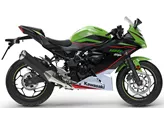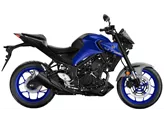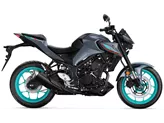Kawasaki Z 400 2019 vs. Kawasaki Ninja 400 2023

Kawasaki Z 400 2019
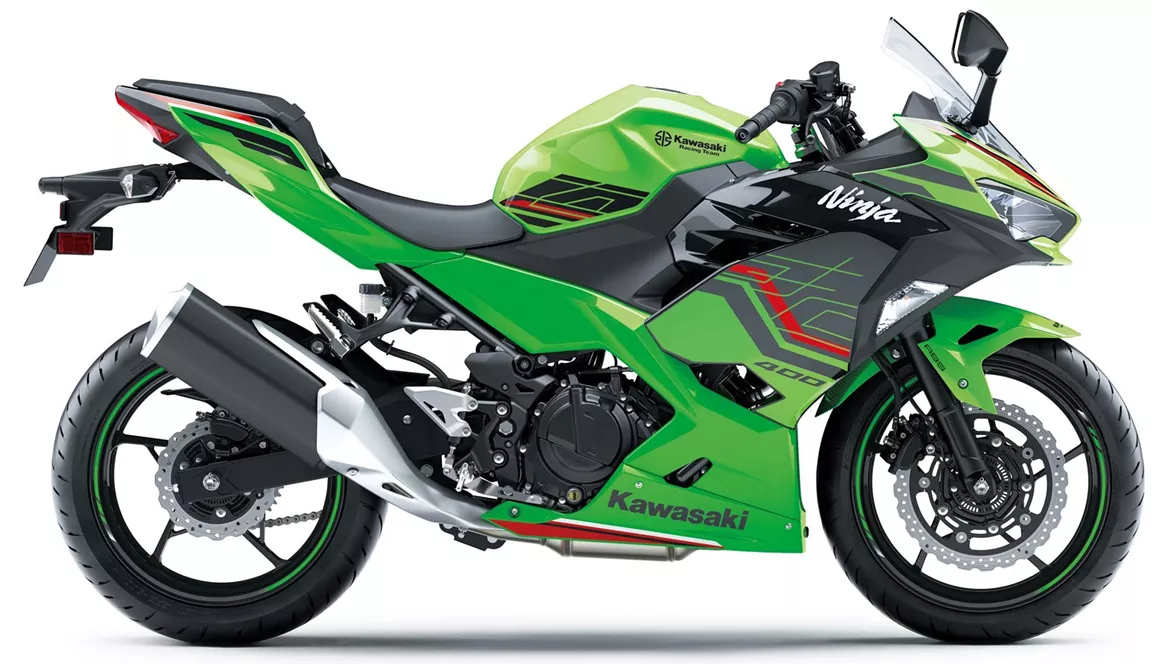
Kawasaki Ninja 400 2023
Vue d’ensemble - Kawasaki Z 400 2019 vs Kawasaki Ninja 400 2023
The Kawasaki Z 400 2019 and the Kawasaki Ninja 400 2023 are both popular models in the Kawasaki lineup, offering a combination of power, performance, and style. While they share many similarities in terms of technical specifications, there are some notable differences between the two.
In terms of engine and drive train, both models feature an inline, 2-cylinder engine with a bore of 70 mm and a stroke of 51.8 mm. They both have a maximum power output of 45 HP and a compression ratio of 11.5. The fuel system is injection-based, with a throttle bore of 32 mm. The cooling system is liquid-based, ensuring optimal engine temperature during operation. The displacement of both models is 399 ccm.
Both the Z 400 and the Ninja 400 feature a telescopic fork front suspension with a diameter of 41 mm and a swing arm rear suspension with a monoshock absorber. The rear suspension also has preload adjustment, allowing riders to fine-tune their riding experience. The chassis of both models is made of steel and has a tubular frame design. The rake angle is slightly different, with the Z 400 having a rake of 65.5 degrees and the Ninja 400 having a rake of 63 degrees. However, both models have a trail of 92 mm, ensuring stability and control during cornering.

Kawasaki Z 400 2019
In terms of braking, both models feature a single disk front brake with a diameter of 310 mm and a double piston setup. The braking technology used is the petal design, which provides efficient heat dissipation and improved braking performance. Both models also come equipped with ABS, ensuring enhanced safety and control during braking.
In terms of dimensions and weights, both models have a front tire width of 110 mm and a front tire diameter of 17 inches. The rear tire width is 150 mm, with a diameter of 17 inches as well. The wheelbase of both models is 1370 mm, providing stability and agility. The seat height is 785 mm, ensuring a comfortable riding position for most riders. The kerb weight, including ABS, is slightly different, with the Z 400 weighing 167 kg and the Ninja 400 weighing 168 kg. Both models have a fuel tank capacity of 14 liters.
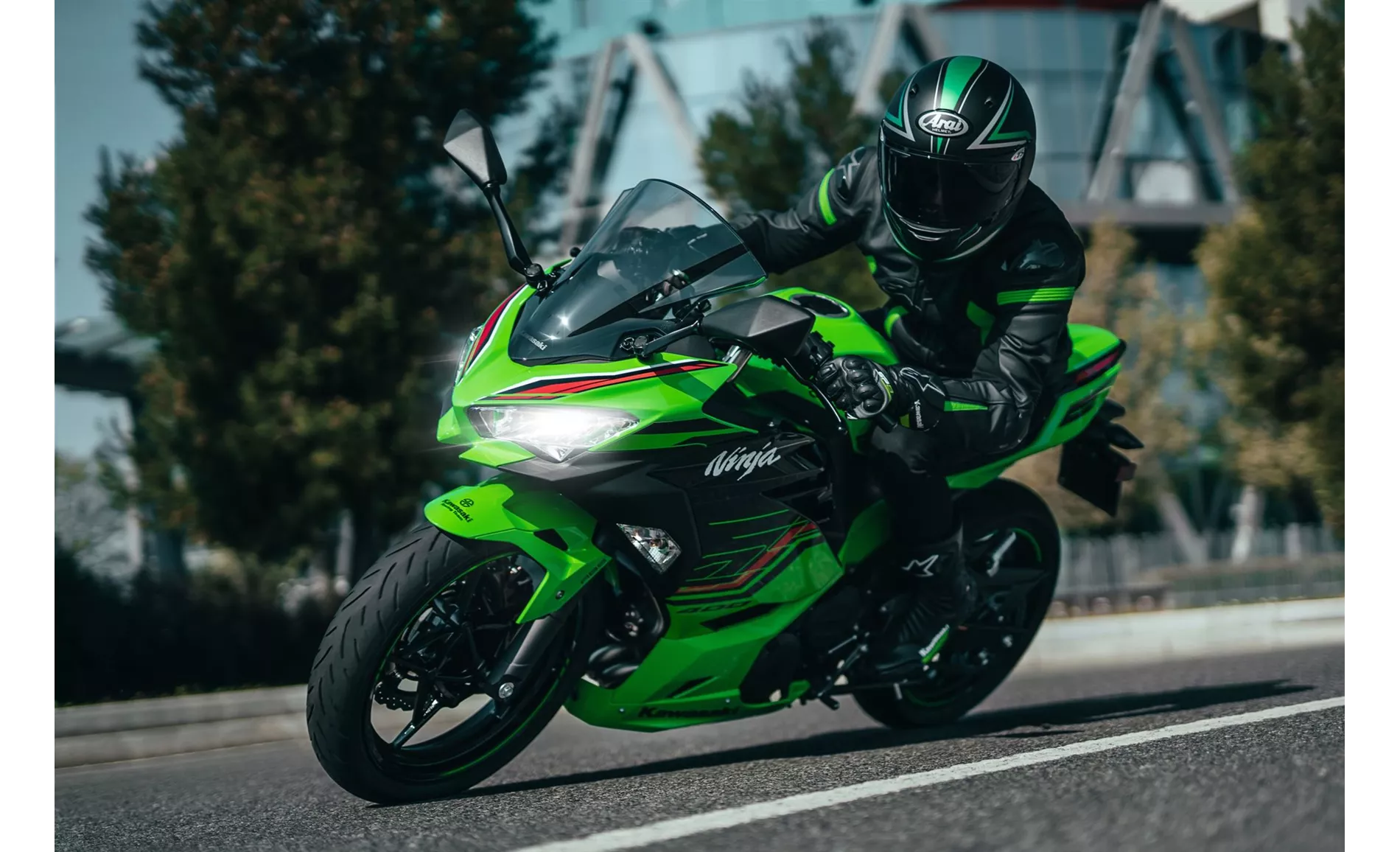
Kawasaki Ninja 400 2023
When comparing the strengths of the two models, the Z 400 2019 is praised for its great, very controllable power delivery, low weight, good seating position, great sound, and suitability for novice riders. On the other hand, the Ninja 400 2023 is commended for its good combination of stability and playful handling, robust and reliable appearance, well-controllable engine, wide usable rev range, and pleasant seating position.
In terms of weaknesses, the Z 400 2019 is criticized for its non-adjustable clutch and brake levers, as well as limited adjustable chassis. On the other hand, the Ninja 400 2023 is noted to have limited space for large pilots.
Overall, both the Kawasaki Z 400 2019 and the Kawasaki Ninja 400 2023 offer a thrilling riding experience with their powerful engines, advanced suspension systems, and reliable braking performance. The choice between the two models ultimately depends on the rider's preferences, whether they prioritize a naked bike design with a focus on controllability or a supersport design with a balance of stability and agility.
Caractéristiques techniques Kawasaki Z 400 2019 par rapport à Kawasaki Ninja 400 2023
Avantages et inconvénients en comparaison
Avantages et inconvénients en comparaison
Kawasaki Z 400 2019

La Kawasaki Z400 est en tout cas une belle évolution du modèle précédent Z300. Plus de puissance, moins de poids - tout simplement une moto encore meilleure. Le développement linéaire de la puissance et l'excellente maniabilité font de la Z400 une moto idéale pour les débutants. La facilité d'actionnement de l'embrayage et la bonne configuration du châssis vont également dans ce sens, raison pour laquelle la Z400 peut être recommandée sans hésitation aux pilotes débutants.
Kawasaki Ninja 400 2023
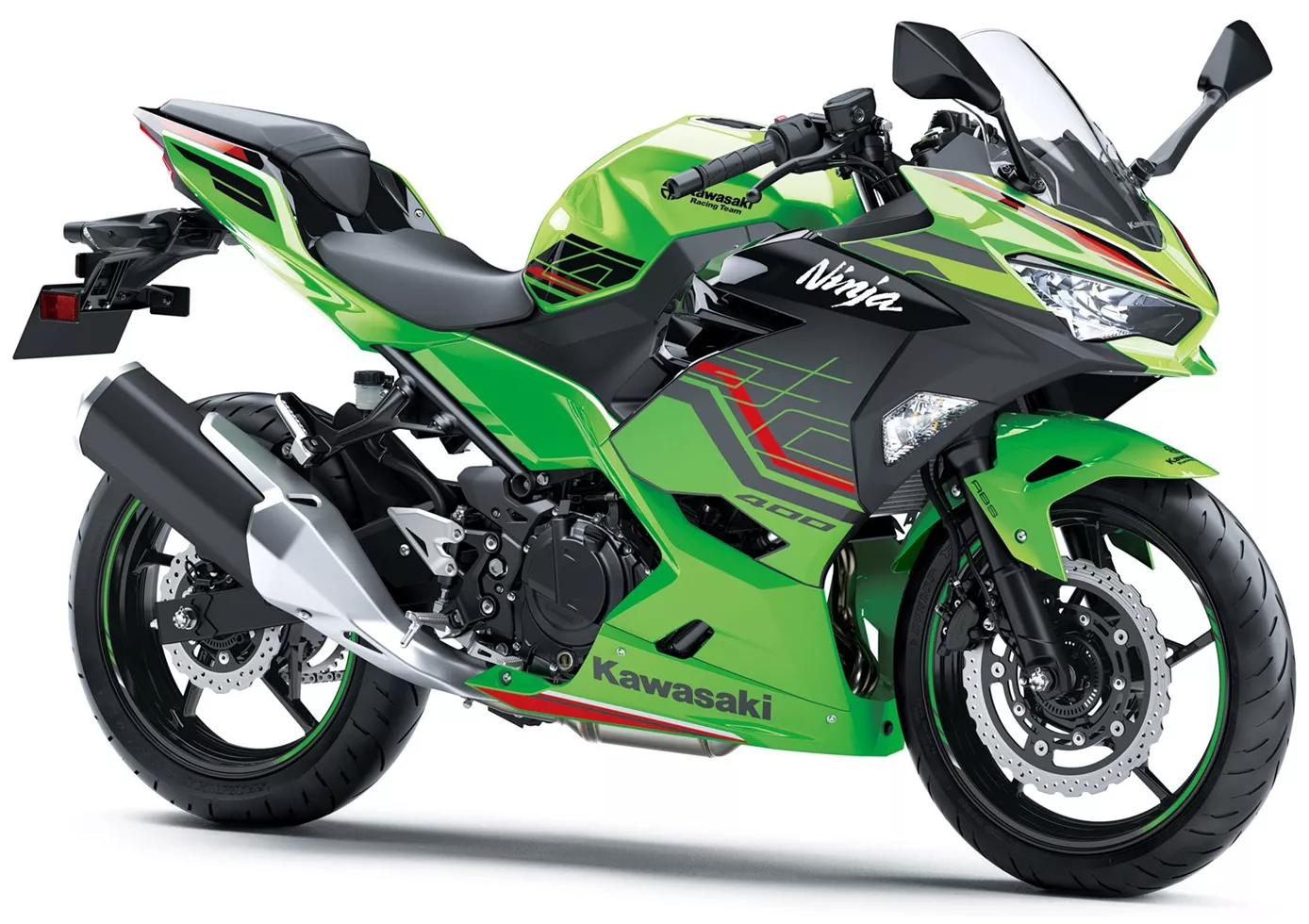
La Ninja 400 offre un grand plaisir de conduire à un prix raisonnable. Elle offre une maniabilité ludique sans être nerveuse. Le terme "Ninja" est un peu fort, mais son domaine d'utilisation est plus large qu'il n'y paraît. Elle se comporte de manière sportive, mais offre également une bonne position de conduite pour le quotidien et les randonnées.
Comparaison des prix Prix moyen du marché Kawasaki Z 400 vs Kawasaki Ninja 400
There are a few key differences between a Kawasaki Z 400 2019 and a Kawasaki Ninja 400 2023. In terms of price, the actual average price of a Kawasaki Ninja 400 2023 is about 29% higher. Compared to Kawasaki Ninja 400 2023 there are less Kawasaki Z 400 2019 bikes available on the 1000PS.de Marketplace, specifically 6 compared to 73. It takes less time to sell a Kawasaki Z 400 with 99 days compared to 165 days for a Kawasaki Ninja 400. Since model year 2019 1000PS.de editors have written 8 reviews for the Kawasaki Z 400 and 9 reviews for the Kawasaki Ninja 400 since model year 2018. The first review for the Kawasaki Z 400 was published on 10/2/2018 and now has more than 23,200 views. This compares to more than 44,300 views for the first review on Kawasaki Ninja 400 published on 11/22/2017.

